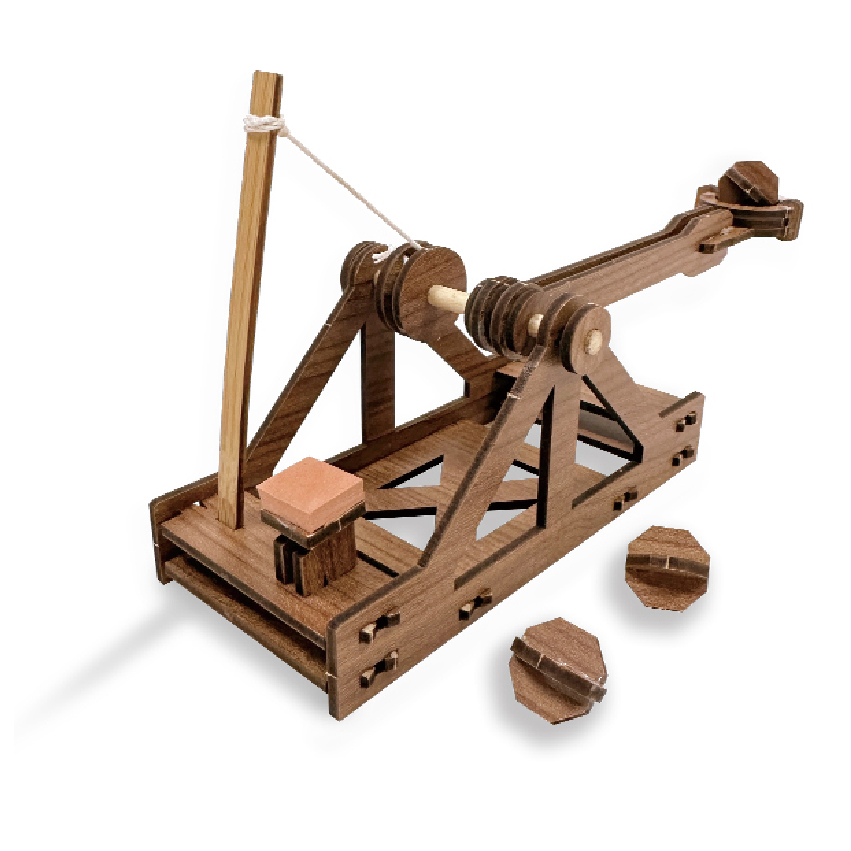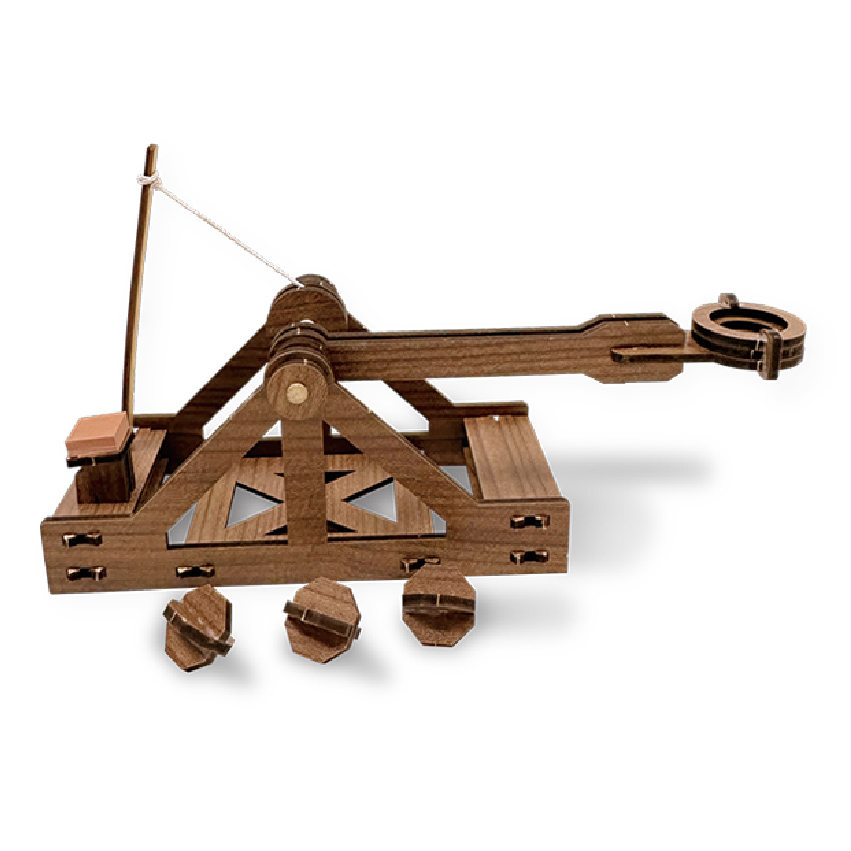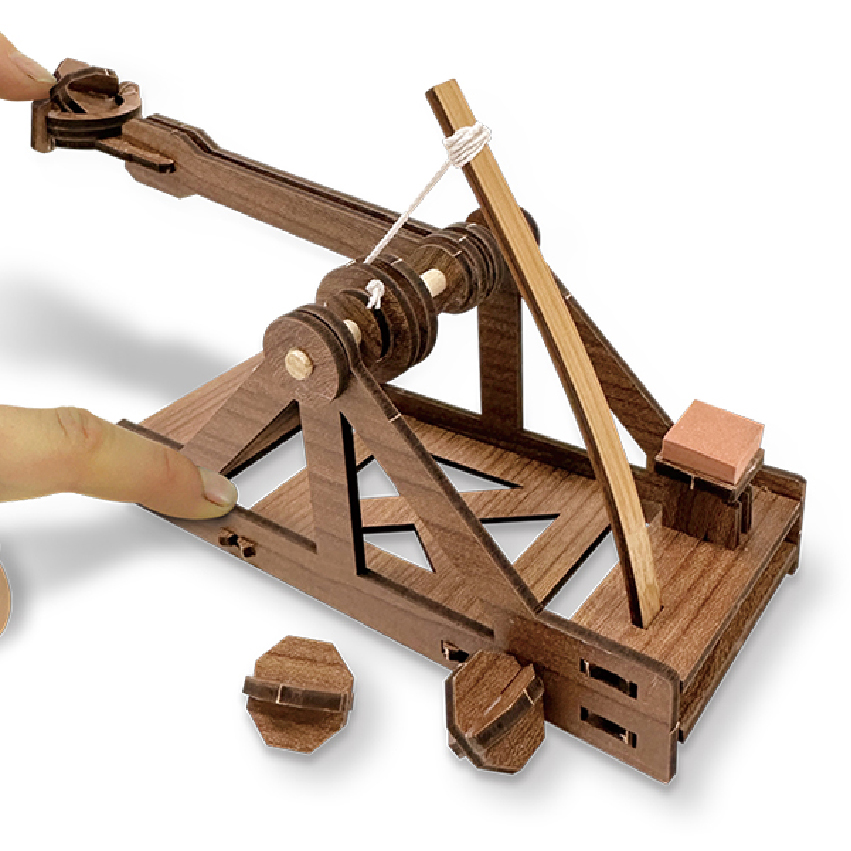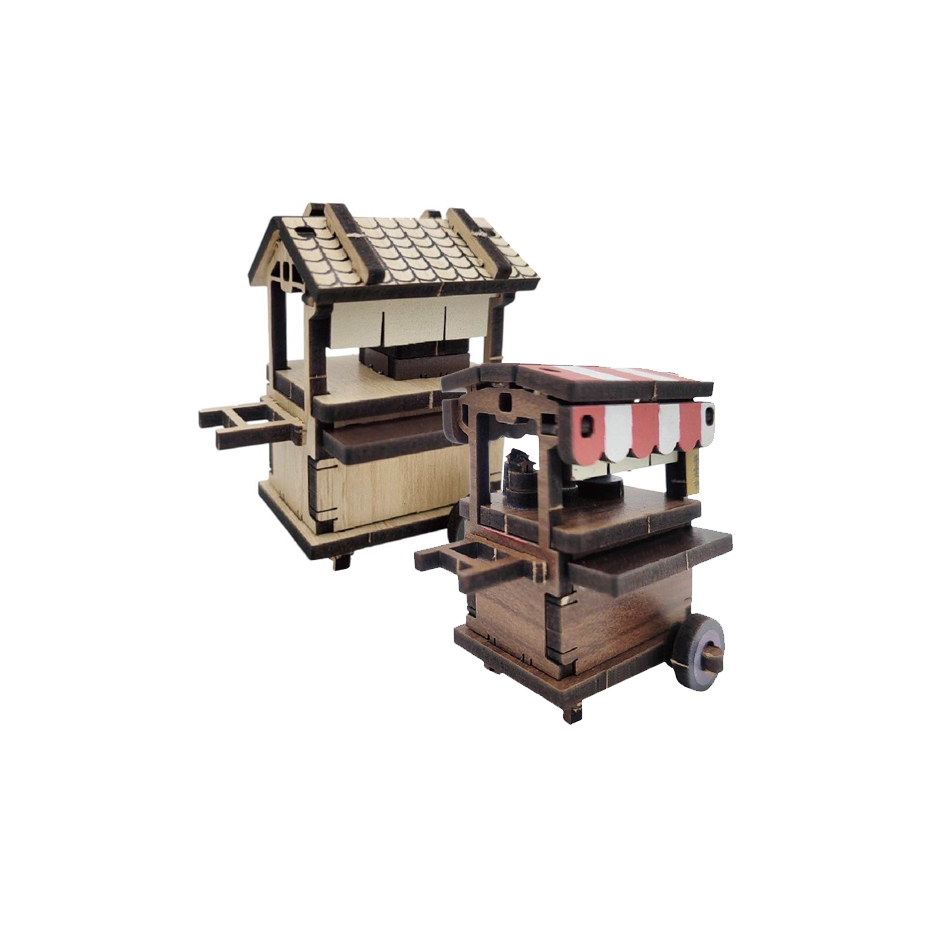Description
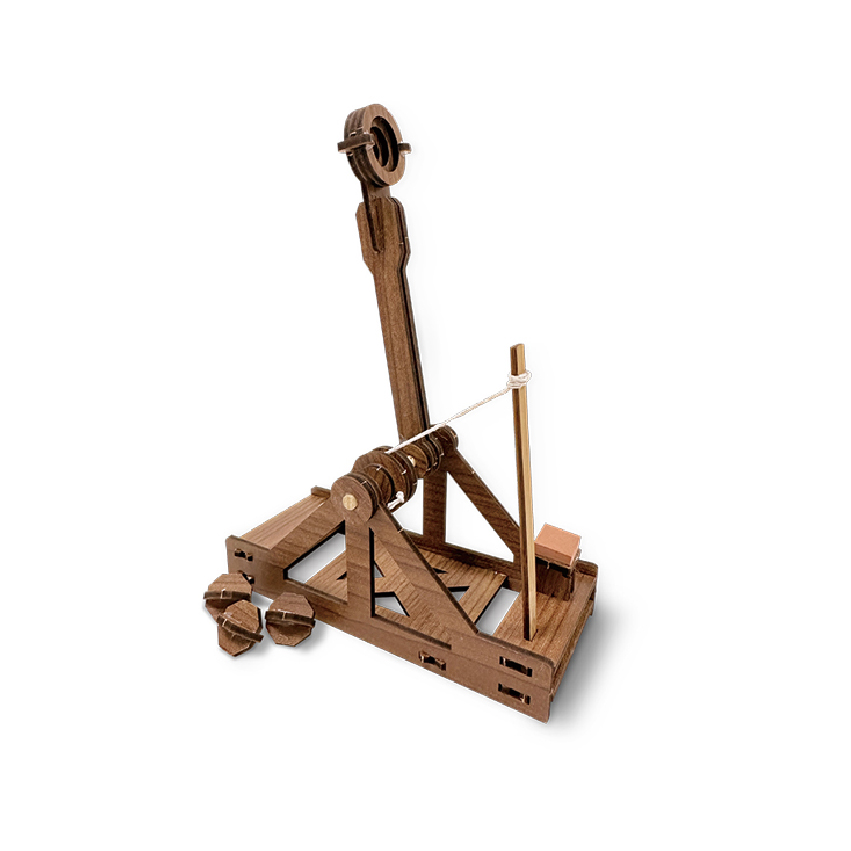
Catapult
Catapult
Da Vinci’s catapult combines classical engineering with inventive design—one of his many brilliant contributions to mechanical science.
Although the catapult was already considered an outdated siege weapon in da Vinci’s time,
he still studied the device in depth and enhanced its design to improve both efficiency and accuracy.
One of the key features of da Vinci’s catapult design is its simplicity combined with practical functionality.
He applied the principle of compound levers to optimize the release of kinetic energy, allowing projectiles to achieve greater range and improved accuracy.
In addition, his design took stability and operational smoothness into account, reducing vibration and wear during use.
This type of catapult was capable of launching heavy objects as well as precisely targeting smaller ones—showcasing da Vinci’s attention to detail and creative ingenuity.
Although da Vinci’s catapult was never deployed on the battlefield, it reflects his deep understanding of classical technology and his exploration of future possibilities.
Through inventions like this, we gain insight into how this Renaissance master fused science and art to create mechanical designs that are both aesthetically striking and functionally meaningful.

